The garden borders at Cottesbrooke Hall are made up of pale pinks, deep purples and icy blues. They are the work of garden designer, Arne Maynard who weaves atmosphere into all his planting with an expert eye for detail, use of texture and concept of space. Here he gives his advice on creating a border and lists some of the plants that make up the stunning borders, grouping them together in colour palettes.

How the border was put together
A confident elegance was needed for the border at Cottesbrook Hall. Arne used a pale slice of the colour wheel at the point of pinks, purples and icy blues, given depth by dark aubergine undertones. It's restrained without being self-consciously monotone. If it had been too rich it would have shouted 'look at me' when it needed to complement the bigger picture of the statue walk. Too pale and it would have fizzled away, much too shy for its setting. The palette of plants began with dark plums and rich pinks, un undercoat that brings vivacity to the paler colours that dominate. Planning a border is a little like organising a meal – ingredients are combined to create dishes that deliver a fulfilling feast. Instead of flavours, it's colours and textures that are being mixed together but it's useful to think of the need for spice to enhance the taste, or milk and yoghurt to diminish the fire.
The palette of plants begin with dark plums and rich pinks, an undercoat that brings vivacity to the paler colours that dominate.
Garden designer, Arne Maynard
The heart of this planting a Cottesbrook Hall is soft and sweet, dominated in June by Digitalis purpurea 'Sutton's Apricot' weaving its pinky-apricot way through the long expanse of the border. It's shade is matched by Rosa The Generous Gardener (='Ausdrawn') trained on dome-shaped frames, which has the presence to divide up the space. Whites and cool blues bring the right amount of luminosity even on a gloomy day.
What to consider before planting a garden border
- Identifying the mood of your border is the starting point of a plan. Borders can be dark and dramatic, or airy and light, rich and bold, sweet or tart, sometimes brooding and energetic, uplifting or peaceful.
- Bear in mind that it is more than just the colour combinations that create the look. The shape of the leaves or petals, the number of different plants, the repetition of the same varieties; even personal and historic associations that plants have can affect the overall atmosphere of the border.
- An infinite number of possible plant combinations exist, but every border has growing conditions that narrow the choice and a setting that is specific to its site.
Arne's choice of border plants
Dark undertones
1
Cercis canadensis ‘Forest Pansy’
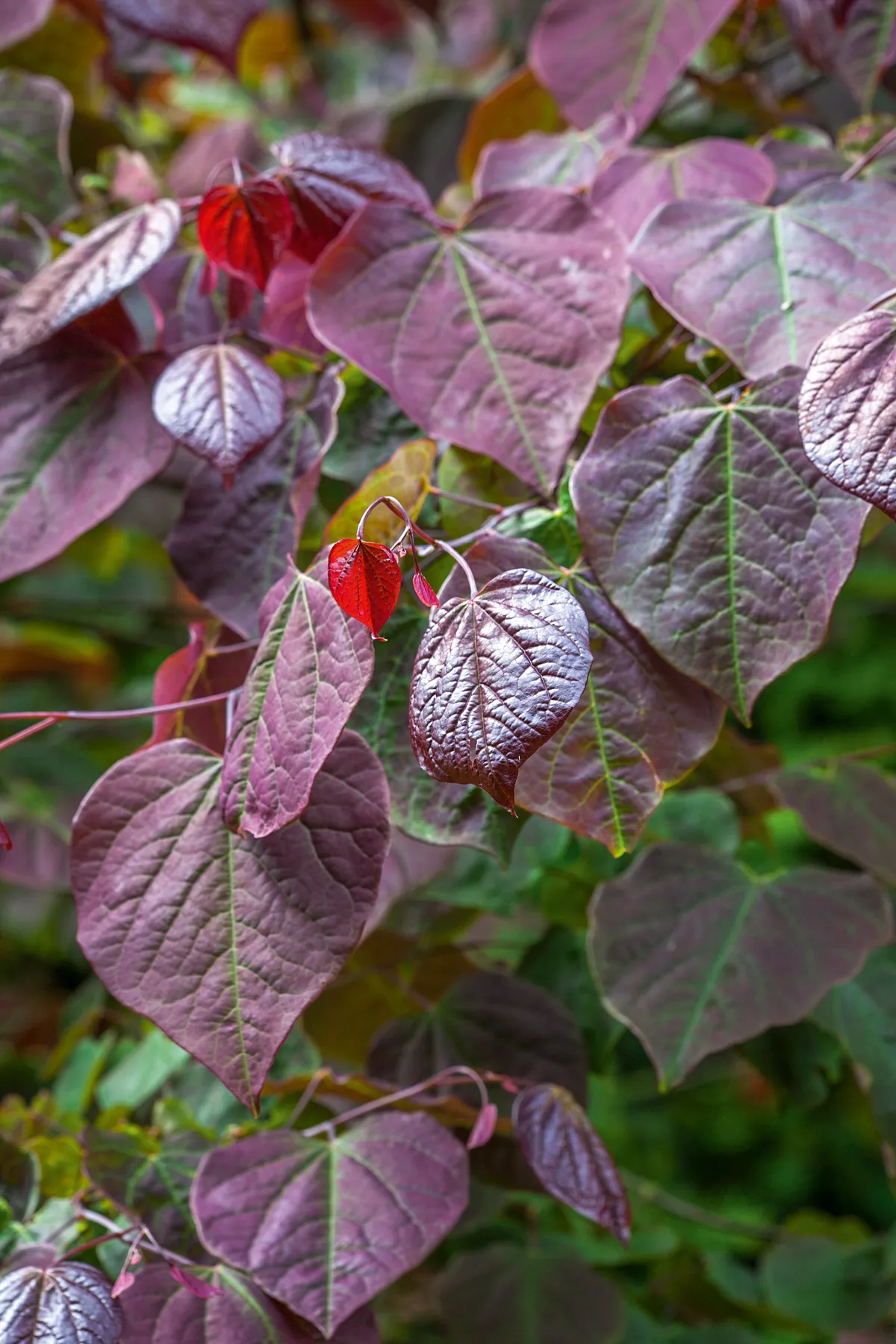
Small, ornamental tree with deep-pink flowers in spring, and purple, heart-shaped leaves in summer. Works well with blues and pinks. Height 10m. Hardiness rating RHS H5, USDA 4a-9b.
2
Rosa William Shakespeare 2000 (=‘Ausromeo’)

Medium-sized shrub rose by David Austin, flowering rich crimson, deepening purple, with a strong fragrance. Height 1.2m. Hardiness rating USDA 5b-9b.
3
Centaurea ‘Jordy’
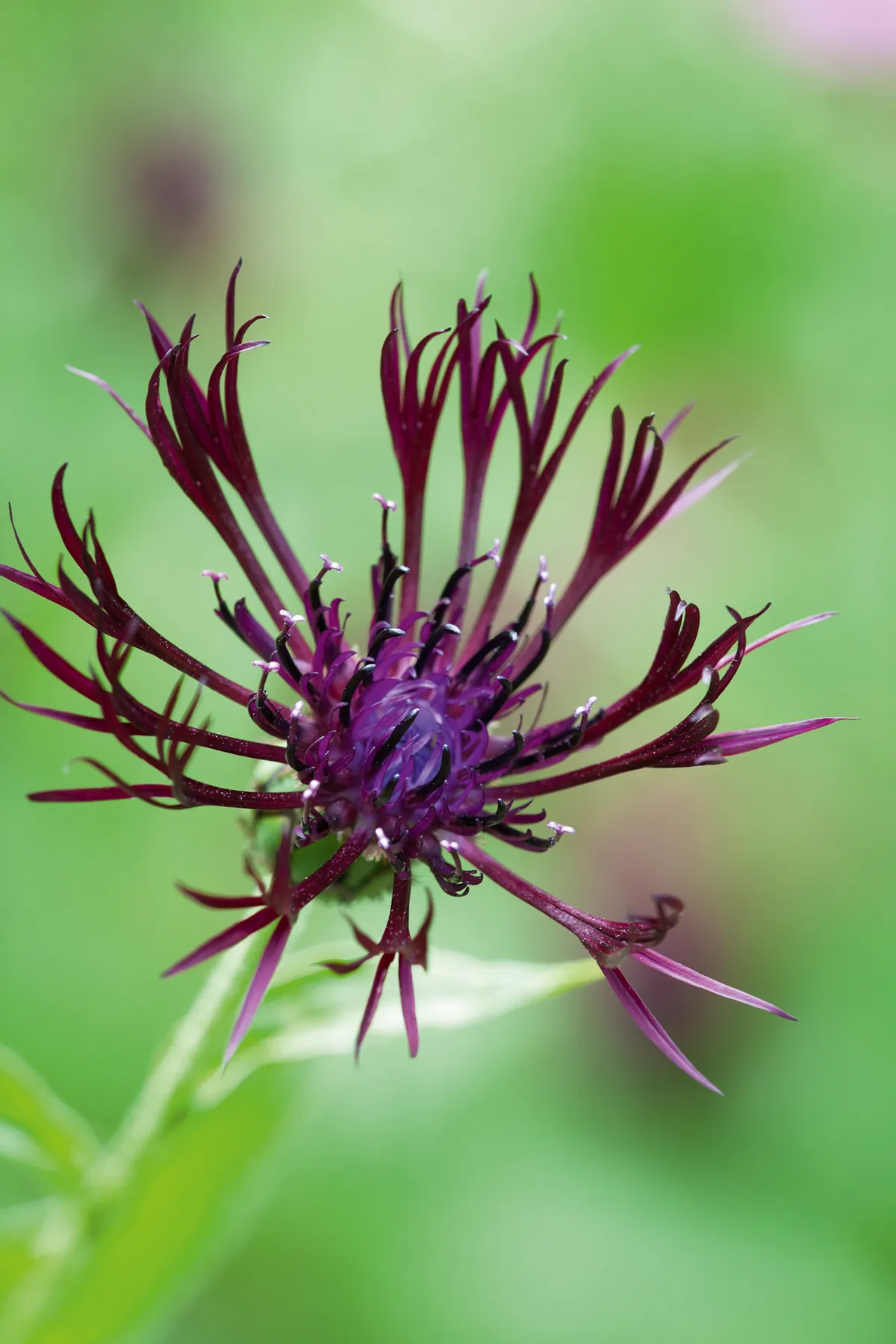
Self-seeding with dark-plum-purple flowers. Best divided every three years. Cut back after flowering for a second flush and deadhead regularly. Height 45cm. Hardiness rating USDA 4a-8b.
4
Cirsium rivulare ‘Atropurpureum’

Sterile, non-invasive plant with deep-crimson, thistle-like flowers on tall, erect stems. Floriferous and self-supporting, prefers damp fertile soil. Height 1.2m. Hardiness rating RHS H7, USDA 5a-9b.
5
Actaea simplex ‘Pink Spike’

Sometimes still labelled as Cimicifuga, this architectural plant has burgundy leaves and spires of fragrant pink and white flowers. All parts poisonous. Height 1.2m. Hardiness rating RHS H7, USDA 3a-8b.
6
Astrantia major ‘Ruby Wedding’

Deep, ruby-red flowers on maroon stems, it often brings on a second flush of flowers in autumn. An excellent filler plant. Height 90cm. Hardiness rating RHS H7, USDA 5a-9b.
Soft and sweet centre
7
Achillea millefolium ‘Lilac Beauty’
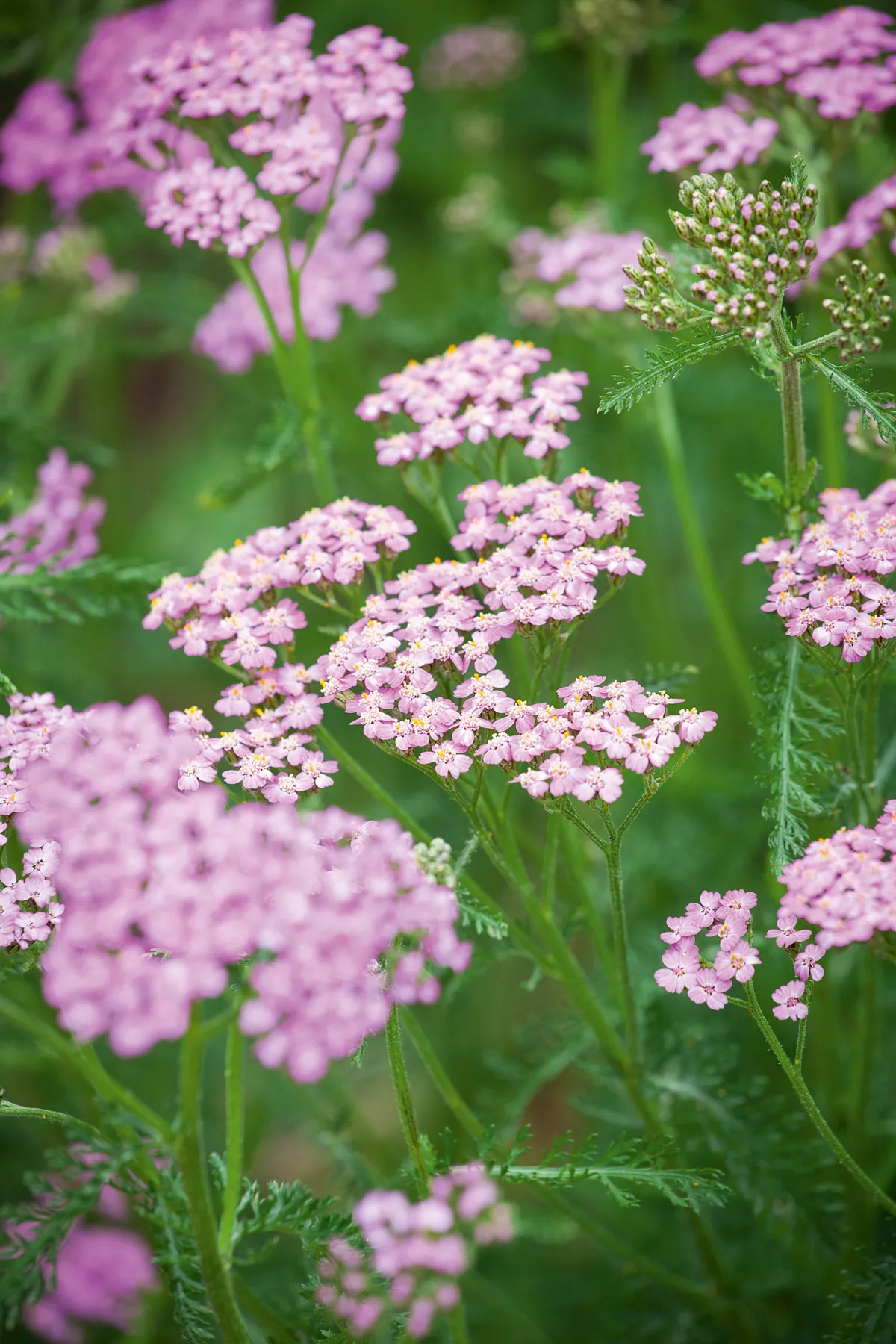
Rosy-lilac flowers on wiry stems with ferny, grey-green foliage that softens a scheme and helps link plants. Cut back after first flowering for second flush. Height 80cm. Hardiness rating USDA 3a-9b.
8
Campanula latiloba ‘Hidcote Amethyst’
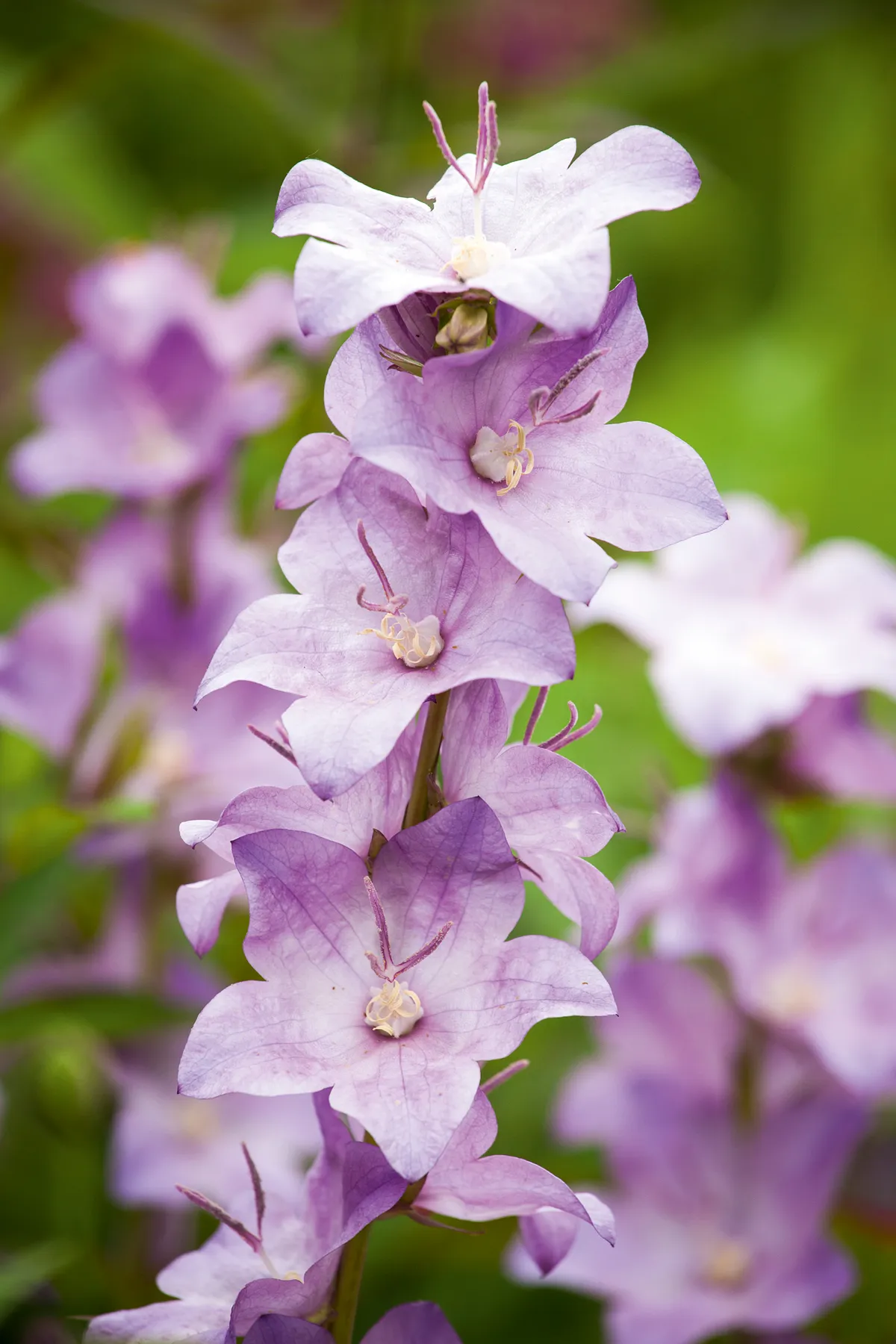
Upright stems studded with outward-facing, large-cupped, dusky lilac-pink flowers. Clumps increase quickly thanks to spreading rosettes. Height 1m. Hardiness rating RHS H7, USDA 5a-7b.
9
Rosa The Generous Gardener (=‘Ausdrawn’)

Lovely climbing rose from David Austin, with a strong and delicious fragrance. Extremely healthy. Height 4.5m. Hardiness rating RHS H6, USDA 5a-10b
10
Rosa Mortimer Sackler (=‘Ausorts’)
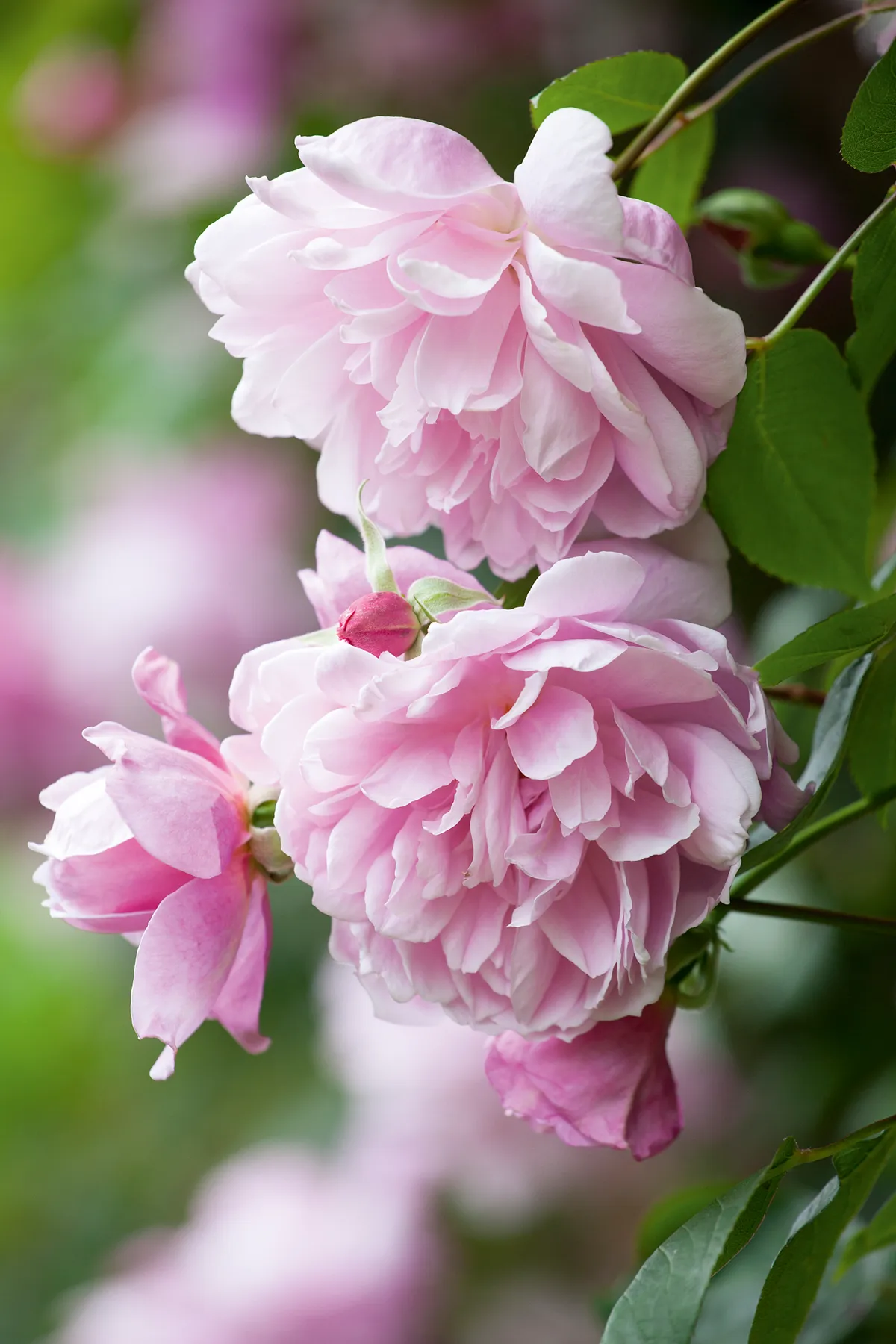
Tall shrub or short climber rose from David Austin. A repeat flowerer that is extremely healthy with a strong scent and very few thorns. Height 3.6m. Hardiness ratings USDA 5a-10a.
11
Centaurea montana ‘Carnea’
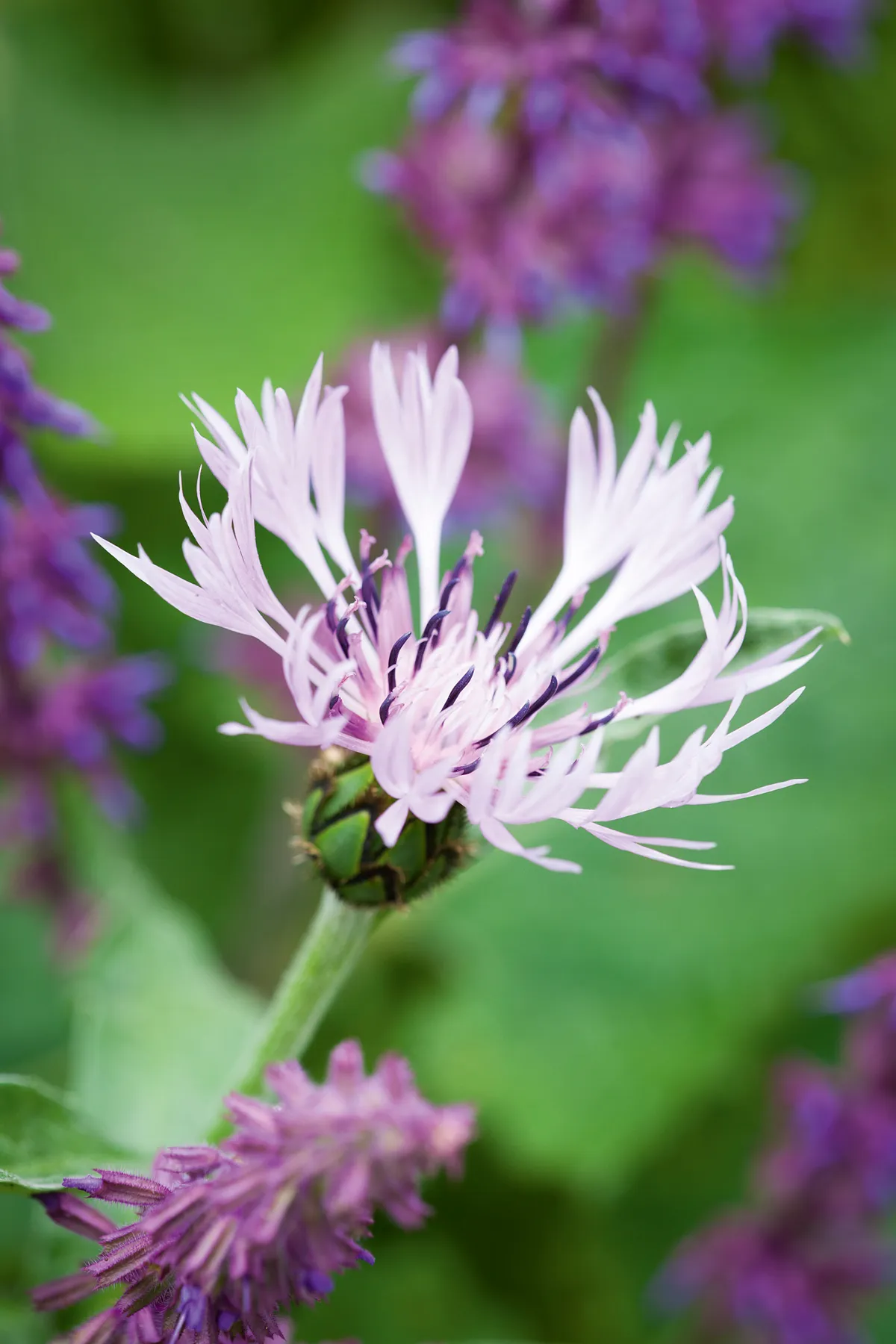
Not quite as long flowering as ‘Jordy’ but more compact with neater foliage. Attractive to bees. Deadheading will extend the flowering period. Height 45cm. Hardiness ratings USDA 4a-8b.
12
Digitalis purpurea ‘Sutton’s Apricot’

Much-prized apricot strain of our native foxglove. Flowers will fade with age to a soft pastel shade of apricot. Very attractive to bees. Height 1-2m. Hardiness rating RHS H7.
Light catchers and top notes
'Whites and cool blues bring the right amount of luminosity even on a gloomy day. When the sun does shine, the way they catch the light can be utterly breathtaking'.
13
Wisteria floribunda ‘Alba’
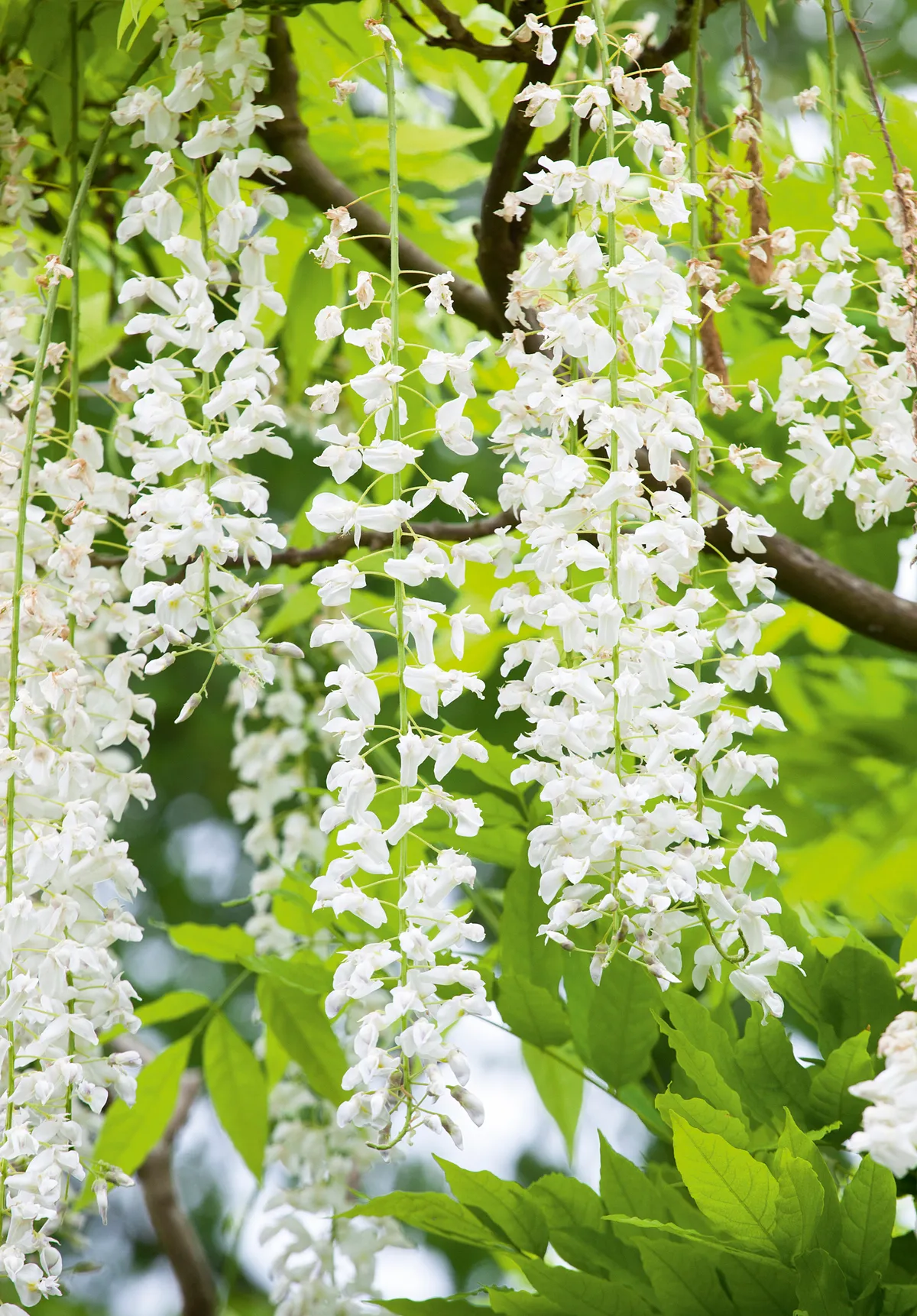
Fragrant, white Japanese wisteria. Prune to encourage a second flush of flowers. A great backdrop, leading the eye upwards and softening the wall. Height 9m. Hardiness rating RHS H5, USDA 4a-9a.
14
Erigeron ‘Quakeress’

A fleabane with large, pale, lilac-pink flowers. It is both vigorous and easy to grow, and extremely floriforious. Also attractive to pollinators. Height 60cm. Hardiness rating USDA 3a-11.
15
Nepeta subsessilis ‘Washfield’
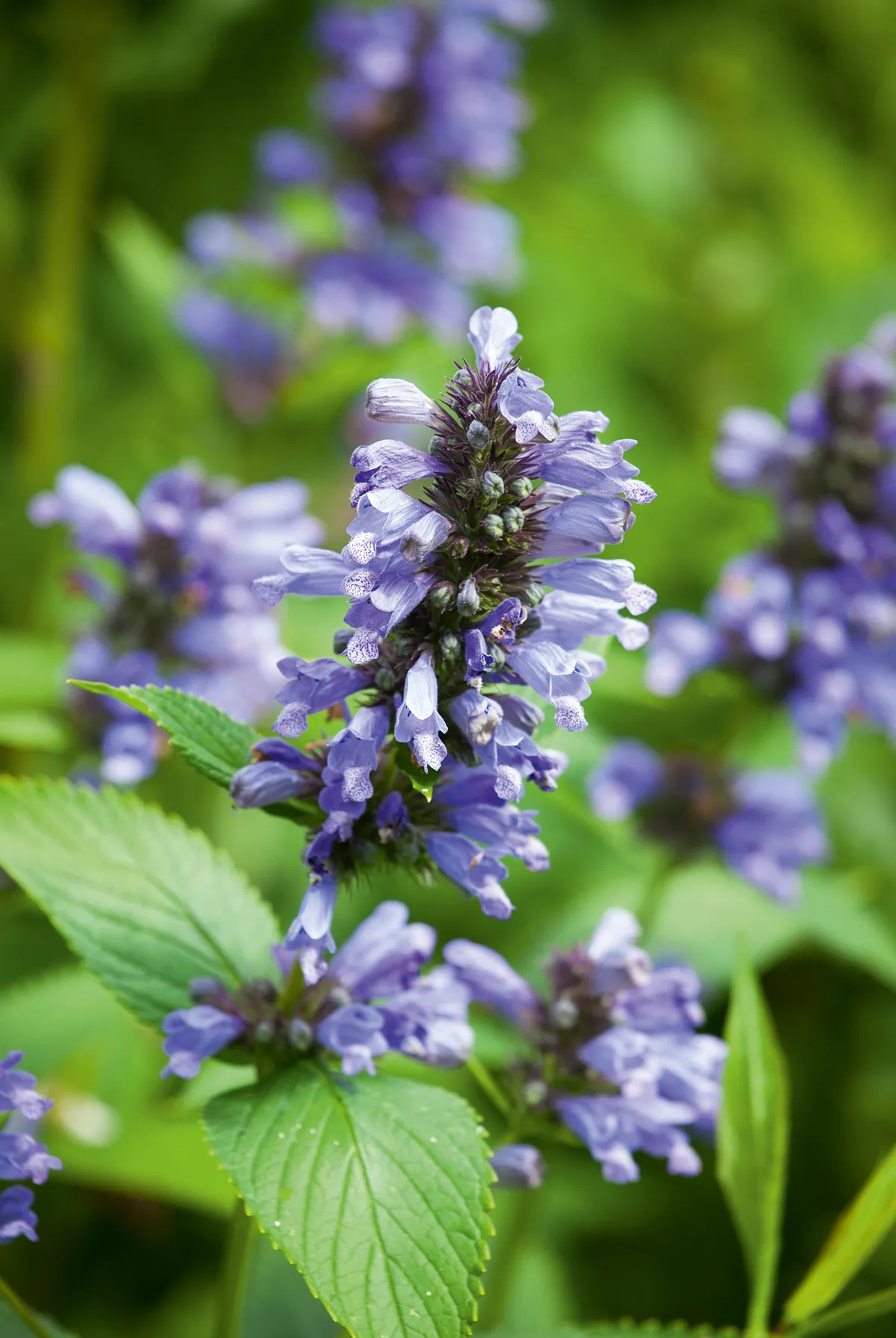
Catmint with dramatic flower heads that stand well into autumn thanks to purple calyces. Upright and sturdy with green leaves that turn slightly purple. Height 90cm. Hardiness rating USDA 3a-7b.
16
Valeriana officinalis

Common valerian is a tall, attractive plant with pinnate foliage and clusters of fragrant, white flowers. Self-seeds freely. Height 1.2-2m. Hardiness ratings RHS H4, USDA 4a-9b.
17
Campanula lactiflora ‘Prichard’s Variety’
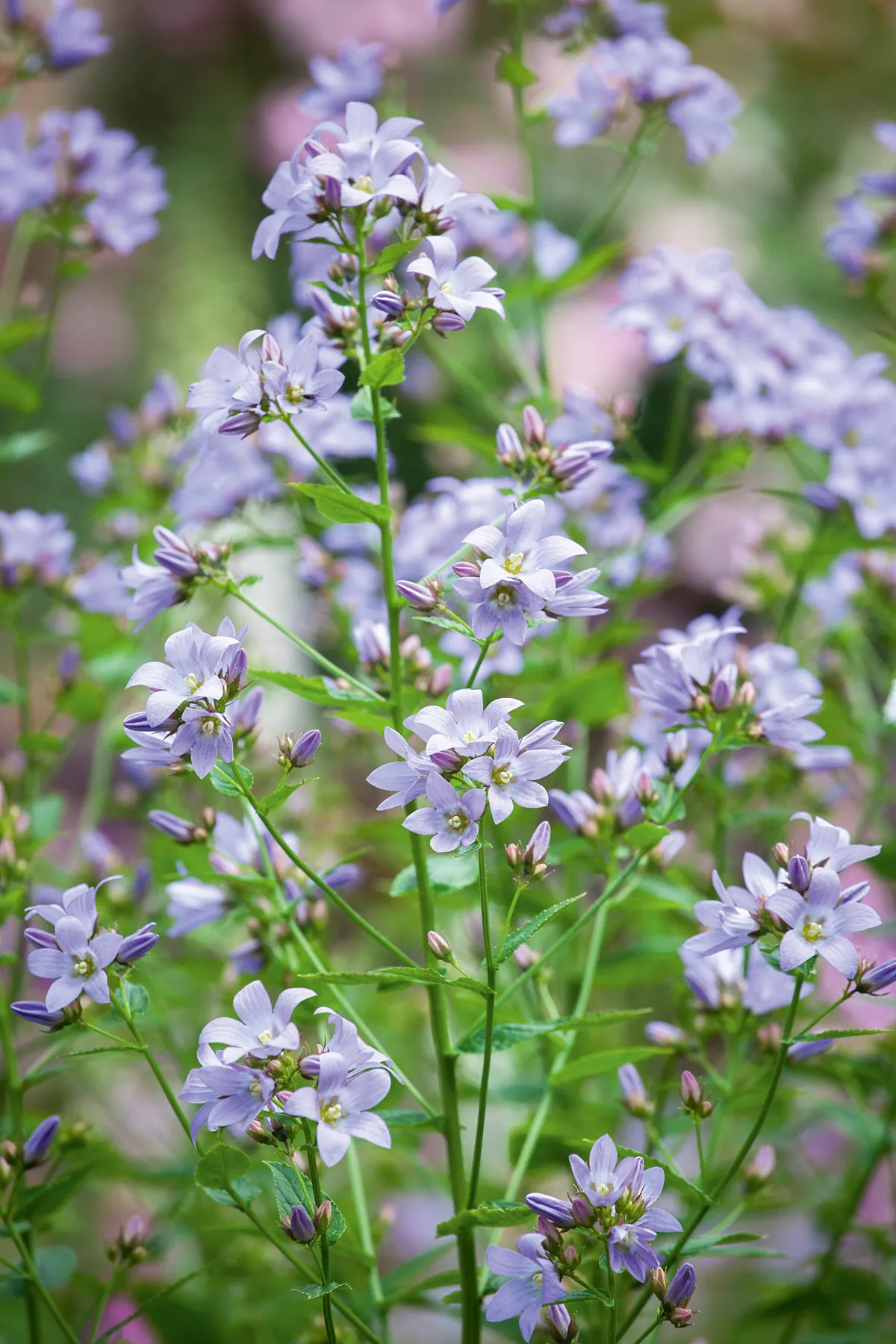
Cottage garden classic with large clusters of violet, star-shaped flowers on branching stems. Combines well with old-fashioned roses. Height 75cm. Hardiness ratings RHS H7, USDA 3a-9a.
Useful information
- Cottesbrooke Hall, Northampton NN6 8PF
- Garden designer Arne Maynard
Photography by Jonathan Buckley